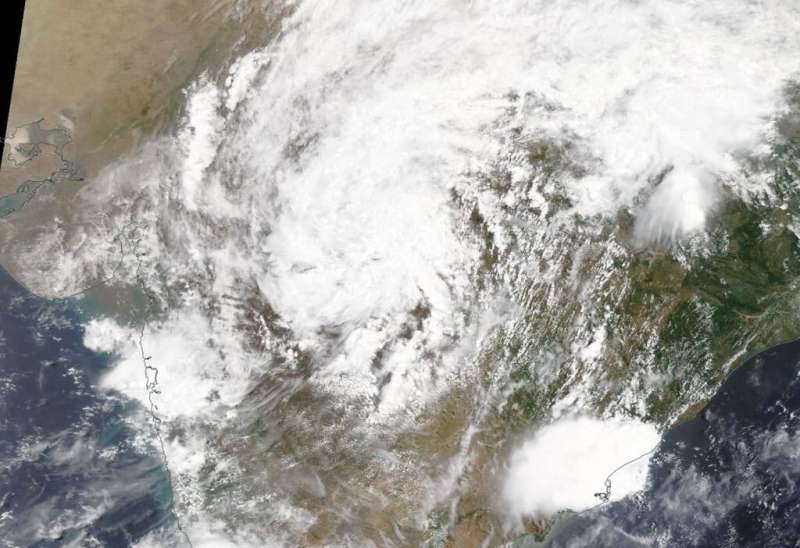NASA finds Nisarga's remnants over Central India

Tropical Cyclone Nisarga made landfall in west central India on June 4, and the next day NASA's Terra satellite provided a look at the remnants of the storm.
On June 4 at 11 a.m. EDT (1500 UTC), the Joint Typhoon Warning Center issued their final warning on Tropical cyclone Nisarga. At that time, Nisarga was located near latitude 19.1 degrees north and longitude 73.7 degrees east, about 48 nautical miles east of Mumbai, India. Nisarga was moving to the north-northeast and still maintained maximum sustained winds 65 knots (75 mph/120 kph). As Nisarga tracked inland to the east of Mumbai the storm weakened from hurricane force to a depression, and finally into a remnant low-pressure area.
On June 4, the Moderate Resolution Imaging Spectroradiometer or MODIS instrument that flies aboard NASA's Terra satellite provided a visible image of Nisarga's remnant clouds, now located over central India.
At 1130 IST (2 a.m. EDT), India's Regional Specialized Meteorological Centre (RSMC) noted that the remnants of Nisarga was located over south Madhya Pradesh state and adjoining Vidarbha state near latitude 21.8 degrees north and longitude 77.6 degrees east, about 87 miles (140 km) north-northeast of Akola (Maharashtra) and 99 miles (160 km) south-southeast of Bhopal (Madhya Pradesh).
RSMC noted, "Light to moderate rainfall at most places with heavy to very heavy falls at isolated places very likely over east Madhya Pradesh and Chhattisgarh. Light to moderate rainfall at most places with heavy falls at isolated places very likely over Vidarbha and west Madhya Pradesh during next 24 hours."
RSMC forecasters said the remnants are likely to move northeastward and weaken into a low-pressure area by the evening hours.
NASA's Terra satellite is one in a fleet of NASA satellites that provide data for hurricane research.
Tropical cyclones/hurricanes are the most powerful weather events on Earth. NASA's expertise in space and scientific exploration contributes to essential services provided to the American people by other federal agencies, such as hurricane weather forecasting.
Provided by NASA's Goddard Space Flight Center





















